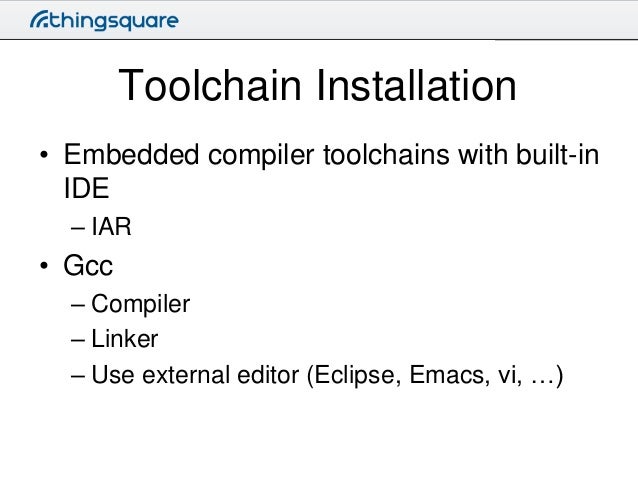Embedded Sys Dev In C
Posted By admin On 04.01.21- Embedded Systems Basic Tutorial
Stout Systems is the software consulting and staffing company Fueled by the Most Powerful Technology Available: Human Intelligence. Stout was founded in 1993 and is based in Ann Arbor, Michigan. Stout has clients across the U.S. In domains including engineering, scientific, manufacturing, education, marketing, entertainment, small business. When I saw that /dev/i2c-1 didn't exist, I assume the kernel wasn't built with i2c support. I asked the customer, and they pointed me towards the directory /sys/class/i2c-dev/i2c-1/. I don't understand how this is different than the /dev/ file, why they chose to do it this way, or how I can work with it. This is a relatively open ended question.
- Embedded Systems Resources
- Selected Reading
System
Embedded Sys Dev Inc Pc
A system is an arrangement in which all its unit assemble work together according to a set of rules. It can also be defined as a way of working, organizing or doing one or many tasks according to a fixed plan. For example, a watch is a time displaying system. Its components follow a set of rules to show time. If one of its parts fails, the watch will stop working. So we can say, in a system, all its subcomponents depend on each other.
Embedded System
As its name suggests, Embedded means something that is attached to another thing. An embedded system can be thought of as a computer hardware system having software embedded in it. An embedded system can be an independent system or it can be a part of a large system. An embedded system is a microcontroller or microprocessor based system which is designed to perform a specific task. For example, a fire alarm is an embedded system; it will sense only smoke.
An embedded system has three components − Traktor pro 2 realtek high definition audio.
It has hardware.
It has application software.
It has Real Time Operating system (RTOS) that supervises the application software and provide mechanism to let the processor run a process as per scheduling by following a plan to control the latencies. RTOS defines the way the system works. It sets the rules during the execution of application program. A small scale embedded system may not have RTOS.
So we can define an embedded system as a Microcontroller based, software driven, reliable, real-time control system.
Characteristics of an Embedded System
Single-functioned − An embedded system usually performs a specialized operation and does the same repeatedly. For example: A pager always functions as a pager.
Tightly constrained − All computing systems have constraints on design metrics, but those on an embedded system can be especially tight. Design metrics is a measure of an implementation's features such as its cost, size, power, and performance. It must be of a size to fit on a single chip, must perform fast enough to process data in real time and consume minimum power to extend battery life.
Reactive and Real time − Many embedded systems must continually react to changes in the system's environment and must compute certain results in real time without any delay. Consider an example of a car cruise controller; it continually monitors and reacts to speed and brake sensors. It must compute acceleration or de-accelerations repeatedly within a limited time; a delayed computation can result in failure to control of the car.
Microprocessors based − It must be microprocessor or microcontroller based.
Memory − It must have a memory, as its software usually embeds in ROM. It does not need any secondary memories in the computer.
Connected − It must have connected peripherals to connect input and output devices.
HW-SW systems − Software is used for more features and flexibility. Hardware is used for performance and security.

Advantages
- Easily Customizable
- Low power consumption
- Low cost
- Enhanced performance
Disadvantages
- High development effort
- Larger time to market
Embedded Sys Dev Inc Stock
Basic Structure of an Embedded System
Free download vst plugins cubase 5. The following illustration shows the basic structure of an embedded system −

Sensor − It measures the physical quantity and converts it to an electrical signal which can be read by an observer or by any electronic instrument like an A2D converter. A sensor stores the measured quantity to the memory.
A-D Converter − An analog-to-digital converter converts the analog signal sent by the sensor into a digital signal.
Processor & ASICs − Processors process the data to measure the output and store it to the memory.
D-A Converter − A digital-to-analog converter converts the digital data fed by the processor to analog data
Actuator − An actuator compares the output given by the D-A Converter to the actual (expected) output stored in it and stores the approved output.